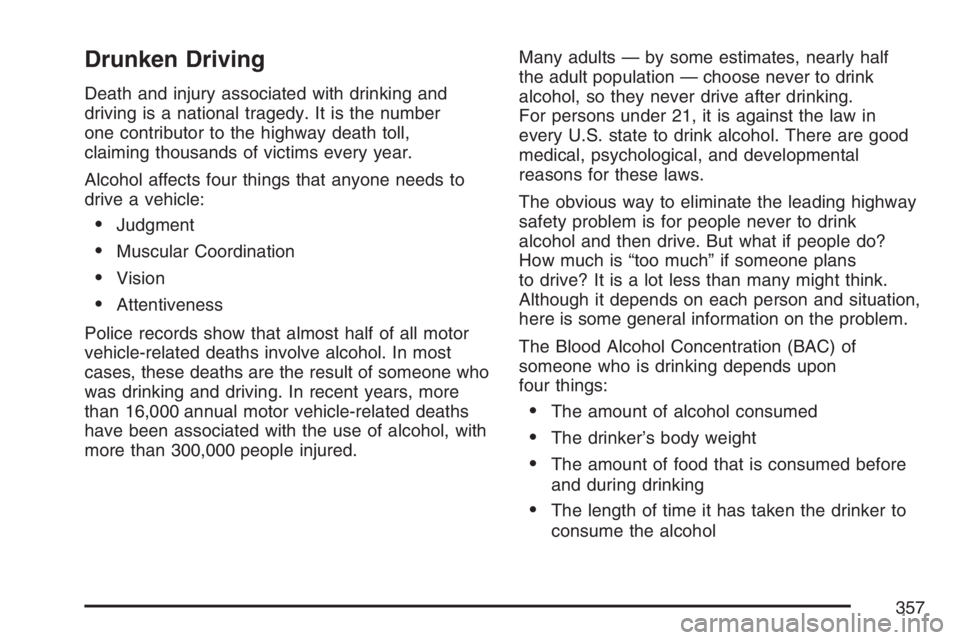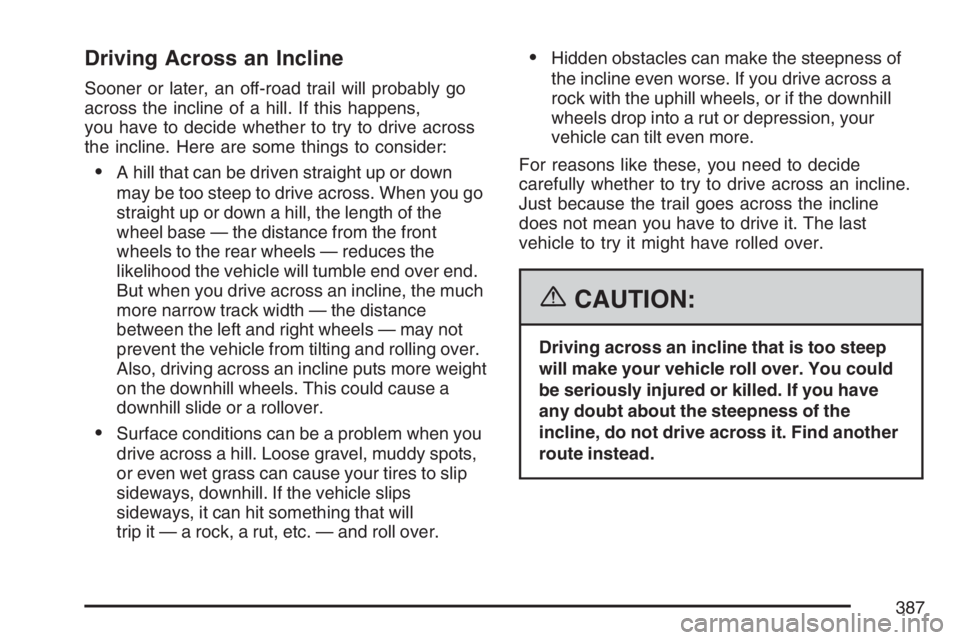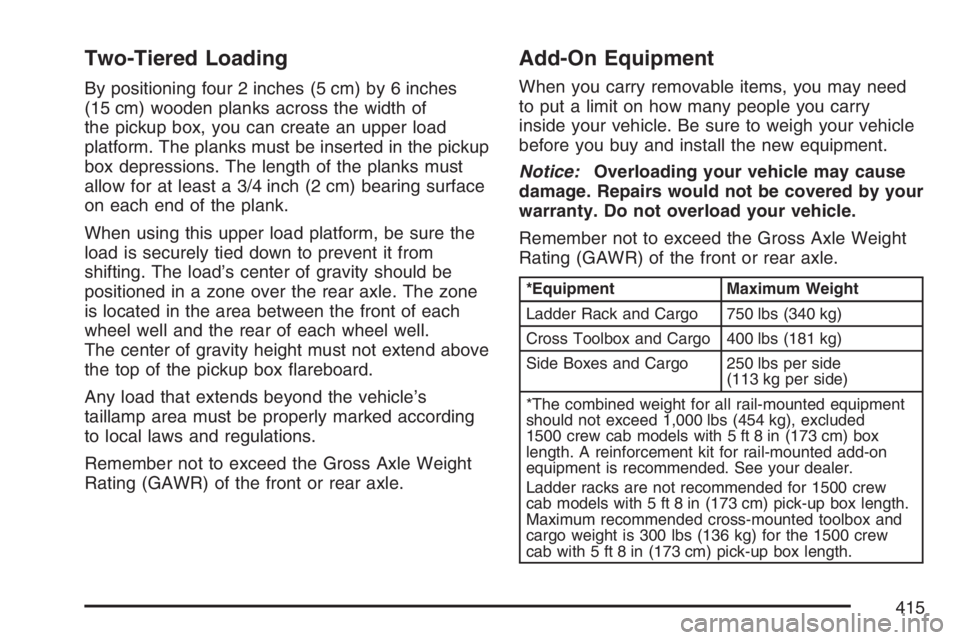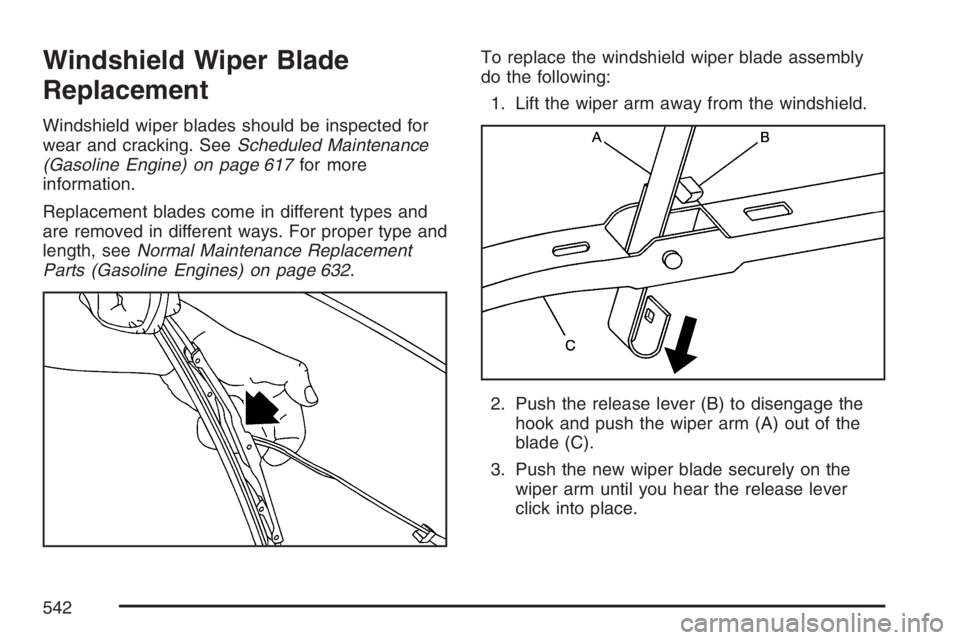2007 GMC SIERRA CLASSIC length
[x] Cancel search: lengthPage 237 of 674

When AUTO is selected, the air conditioning
operation and air inlet will be automatically
controlled. The air conditioning compressor will
run when the outside temperature is over
about 40°F (4°C). The air inlet will normally be
set to outside air. If it is hot outside, the air
inlet may automatically switch to recirculate
inside air to help quickly cool down your
vehicle. The light on the button will come on in
recirculation.
2. Set the driver’s and passenger’s temperature.
To �nd your comfort setting, start with a 74°F
(23°C) temperature setting and allow about
20 minutes for the system to regulate. Turn the
driver’s or passenger’s side temperature
knob to adjust the temperature setting as
necessary. If you choose the temperature
setting of 60°F (15°C) the system will remain
at the maximum cooling setting. If you
choose the temperature setting of 90°F (32°C)
the system will remain at the maximum
heat setting. Choosing either maximum setting
will not cause the vehicle to heat or cool
any faster.Be careful not to cover the solar sensor
located on the top of the instrument panel
near the windshield. This sensor regulates air
temperature based on sun intensity. It also
turns on the headlamps. For more information
on the solar sensor, see “Sensors” later in
this section.
To avoid blowing cold air in cold weather, the
system will delay turning on the fan until
warm air is available. The length of delay
depends on the engine coolant temperature.
Pressing the fan switch will override this delay
and change the fan to a selected speed.
9(Off):Press this button to turn off the entire
climate control system. Outside air will still
enter the vehicle, and will be directed to the �oor.
This direction can be changed by pressing the
mode button. The temperature can also be
adjusted using either temperature knob. Press the
up or down arrows on the fan switch, the defrost
button, the AUTO button, or the air conditioning
button to turn the system on when it is off.
237
Page 357 of 674

Drunken Driving
Death and injury associated with drinking and
driving is a national tragedy. It is the number
one contributor to the highway death toll,
claiming thousands of victims every year.
Alcohol affects four things that anyone needs to
drive a vehicle:
Judgment
Muscular Coordination
Vision
Attentiveness
Police records show that almost half of all motor
vehicle-related deaths involve alcohol. In most
cases, these deaths are the result of someone who
was drinking and driving. In recent years, more
than 16,000 annual motor vehicle-related deaths
have been associated with the use of alcohol, with
more than 300,000 people injured.Many adults — by some estimates, nearly half
the adult population — choose never to drink
alcohol, so they never drive after drinking.
For persons under 21, it is against the law in
every U.S. state to drink alcohol. There are good
medical, psychological, and developmental
reasons for these laws.
The obvious way to eliminate the leading highway
safety problem is for people never to drink
alcohol and then drive. But what if people do?
How much is “too much” if someone plans
to drive? It is a lot less than many might think.
Although it depends on each person and situation,
here is some general information on the problem.
The Blood Alcohol Concentration (BAC) of
someone who is drinking depends upon
four things:
The amount of alcohol consumed
The drinker’s body weight
The amount of food that is consumed before
and during drinking
The length of time it has taken the drinker to
consume the alcohol
357
Page 387 of 674

Driving Across an Incline
Sooner or later, an off-road trail will probably go
across the incline of a hill. If this happens,
you have to decide whether to try to drive across
the incline. Here are some things to consider:
A hill that can be driven straight up or down
may be too steep to drive across. When you go
straight up or down a hill, the length of the
wheel base — the distance from the front
wheels to the rear wheels — reduces the
likelihood the vehicle will tumble end over end.
But when you drive across an incline, the much
more narrow track width — the distance
between the left and right wheels — may not
prevent the vehicle from tilting and rolling over.
Also, driving across an incline puts more weight
on the downhill wheels. This could cause a
downhill slide or a rollover.
Surface conditions can be a problem when you
drive across a hill. Loose gravel, muddy spots,
or even wet grass can cause your tires to slip
sideways, downhill. If the vehicle slips
sideways, it can hit something that will
trip it — a rock, a rut, etc. — and roll over.
Hidden obstacles can make the steepness of
the incline even worse. If you drive across a
rock with the uphill wheels, or if the downhill
wheels drop into a rut or depression, your
vehicle can tilt even more.
For reasons like these, you need to decide
carefully whether to try to drive across an incline.
Just because the trail goes across the incline
does not mean you have to drive it. The last
vehicle to try it might have rolled over.
{CAUTION:
Driving across an incline that is too steep
will make your vehicle roll over. You could
be seriously injured or killed. If you have
any doubt about the steepness of the
incline, do not drive across it. Find another
route instead.
387
Page 415 of 674

Two-Tiered Loading
By positioning four 2 inches (5 cm) by 6 inches
(15 cm) wooden planks across the width of
the pickup box, you can create an upper load
platform. The planks must be inserted in the pickup
box depressions. The length of the planks must
allow for at least a 3/4 inch (2 cm) bearing surface
on each end of the plank.
When using this upper load platform, be sure the
load is securely tied down to prevent it from
shifting. The load’s center of gravity should be
positioned in a zone over the rear axle. The zone
is located in the area between the front of each
wheel well and the rear of each wheel well.
The center of gravity height must not extend above
the top of the pickup box �areboard.
Any load that extends beyond the vehicle’s
taillamp area must be properly marked according
to local laws and regulations.
Remember not to exceed the Gross Axle Weight
Rating (GAWR) of the front or rear axle.
Add-On Equipment
When you carry removable items, you may need
to put a limit on how many people you carry
inside your vehicle. Be sure to weigh your vehicle
before you buy and install the new equipment.
Notice:Overloading your vehicle may cause
damage. Repairs would not be covered by your
warranty. Do not overload your vehicle.
Remember not to exceed the Gross Axle Weight
Rating (GAWR) of the front or rear axle.
*Equipment Maximum Weight
Ladder Rack and Cargo 750 lbs (340 kg)
Cross Toolbox and Cargo 400 lbs (181 kg)
Side Boxes and Cargo 250 lbs per side
(113 kg per side)
*The combined weight for all rail-mounted equipment
should not exceed 1,000 lbs (454 kg), excluded
1500 crew cab models with 5 ft 8 in (173 cm) box
length. A reinforcement kit for rail-mounted add-on
equipment is recommended. See your dealer.
Ladder racks are not recommended for 1500 crew
cab models with 5 ft 8 in (173 cm) pick-up box length.
Maximum recommended cross-mounted toolbox and
cargo weight is 300 lbs (136 kg) for the 1500 crew
cab with 5 ft 8 in (173 cm) pick-up box length.
415
Page 542 of 674

Windshield Wiper Blade
Replacement
Windshield wiper blades should be inspected for
wear and cracking. SeeScheduled Maintenance
(Gasoline Engine) on page 617for more
information.
Replacement blades come in different types and
are removed in different ways. For proper type and
length, seeNormal Maintenance Replacement
Parts (Gasoline Engines) on page 632.To replace the windshield wiper blade assembly
do the following:
1. Lift the wiper arm away from the windshield.
2. Push the release lever (B) to disengage the
hook and push the wiper arm (A) out of the
blade (C).
3. Push the new wiper blade securely on the
wiper arm until you hear the release lever
click into place.
542